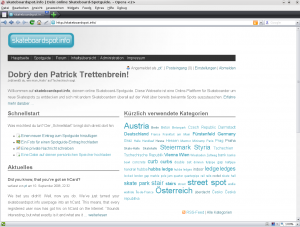Browser-Konfiguration/Opera
This tutorial explains how to configure Opera so that it will blend with your Plasma applications. To do this, we'll need to install the Opera Oxygen Project skin, set Opera to use your chosen Plasma Desktop scheme, and change Opera's default fonts to the ones which KDE uses.
== Schritt 1: Das Skin installieren
Starten Sie Opera und rufen Sie die folgende Adresse auf:
http://my.opera.com/community/customize/skins/info/?id=8141
Click to install the skin.
Step 2: Applying the Skin & Changing the Color Scheme
Go to .
In the Skins box, you will see a list of all the skins that are currently installed. Click on to apply the Opera Oxygen Project skin to Opera.
Click on the menu box next to Color Scheme and select to let Opera use KDE's color scheme.
Step 3: Changing the Font
Go to . Click on the tab.
Opera has two default fonts - the normal font and the monospace font. You can change these default fonts by clicking on them. Change the normal font to DejaVu Sans and change the monospace font to DejaVu Sans Mono.
That's it! Now Opera will look and feel just like your Plasma applications.

Source
This tutorial is based on Patrick Trettenbrein's blog entry entitled “How to make Opera 9.5 look native in KDE 4”. Additional updates have been made as Opera has been updated.


